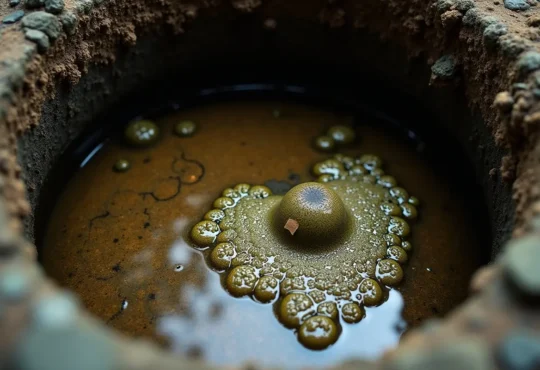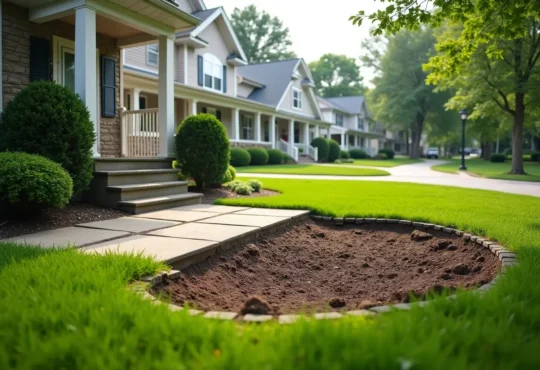
How to Replace Toilet Flapper
The humble toilet flapper, a seemingly insignificant rubber component, plays a crucial role in controlling the flow of water from the tank into the bowl during flushing. Since they are prone to wear and tear over time, there will come a time when you must replace your toilet flapper.
Fortunately, replacing a toilet flapper is a relatively straightforward task that most homeowners can tackle themselves, saving money and ensuring their toilets operate at peak efficiency.
Contents
- 1 Toilet Flapper’s Anatomy and Function
- 2 Signs of a Faulty Toilet Flapper
- 3 Causes of Toilet Flapper Failure
- 4 Benefits of Replacing a Faulty Toilet Flapper
- 5 Choosing the Right Replacement Toilet Flapper
- 6 Step-by-Step Guide to Replacing a Toilet Flapper
- 7 Maintaining Your New Toilet Flapper
- 8 Additional Tips and Considerations
- 9 FAQs
Toilet Flapper’s Anatomy and Function
Before starting the process, it’s essential to understand the anatomy and function of this vital component. The toilet flapper, or flush valve seal, is a disc-shaped piece atop the flush valve. When flushed, it lifts to let water rush into the bowl, creating the flushing action.
Once the flushing process is complete, the flapper seals the flush valve opening, preventing water from continually flowing into the bowl. This sealing action is crucial, as a faulty flapper can lead to a range of problems, including constant running water, weak flushes, and even spontaneous flushing (also known as “phantom flushing”).
Signs of a Faulty Toilet Flapper
Identifying the signs of a faulty toilet flapper is the first step in determining whether a replacement is necessary. Some common indicators include:
- Constant running water: If you hear the sound of water continuously running in your toilet tank, it’s likely that the flapper is not sealing properly, allowing water to trickle into the bowl.
- Weak or incomplete flushing: If the toilet fails to flush with sufficient force or leaves waste behind, the culprit could be a worn-out flapper that is not lifting high enough to allow adequate water flow.
- Phantom flushing: If your toilet seems to flush on its own without anyone operating the handle, it’s a telltale sign that the flapper is not sealing correctly, causing the tank to refill and trigger another flush.
- Visible damage or deterioration: Over time, the rubber or plastic material of the flapper can become cracked, warped, or discolored, compromising its ability to seal the flush valve opening effectively.
Causes of Toilet Flapper Failure
Understanding the potential causes of toilet flapper failure can help you prevent future issues and extend the lifespan of your replacement flapper. Some common culprits include:
- Water quality: Hard water or water with high mineral content can accelerate the deterioration of rubber or plastic flappers, leading to premature failure.
- Chemical exposure: Certain toilet bowl cleaners or cleaning tablets can be harsh on flappers, causing them to degrade more quickly.
- Age and wear: Like any component, flappers have a limited lifespan and will eventually need to be replaced due to normal wear and tear.
- Improper installation: If a flapper is not installed correctly, it may not seal properly or may experience additional strain, leading to premature failure.
Benefits of Replacing a Faulty Toilet Flapper
While it may seem like a minor issue, replacing a faulty toilet flapper can have several benefits for your home and your wallet:
- Water conservation: A constantly running toilet can waste hundreds of gallons of water per month, driving up your water bill and placing unnecessary strain on municipal water systems.
- Improved toilet performance: A new, properly functioning flapper can restore your toilet’s flushing power, ensuring a thorough and efficient flush every time.
- Reduced maintenance costs: Addressing a faulty flapper early can prevent more costly repairs down the line, such as replacing the entire flush valve assembly or addressing water damage caused by leaks.
- Environmental impact: By conserving water and reducing the strain on municipal systems, you’re doing your part to minimize your environmental footprint.
Choosing the Right Replacement Toilet Flapper
With so many different toilet models and flapper designs on the market, selecting the right replacement flapper is crucial for ensuring a proper fit and effective sealing. Here are a few tips to help you choose the right flapper:
- Measure the existing flapper: Most flappers are either 2 inches or 3 inches in diameter. Measure your existing flapper to ensure you purchase the correct size.
- Consider adjustable flappers: Some flappers are adjustable, allowing you to fine-tune the water level in the tank for optimal flushing performance.
- Check for compatibility: If you’re unsure which flapper to choose, consult the manufacturer’s website or a hardware store professional for guidance on compatible replacements for your specific toilet model.
- Consider universal flappers: Universal flappers are designed to fit a wide range of toilet models, providing a convenient and versatile option for many homeowners.
Step-by-Step Guide to Replacing a Toilet Flapper
Now that you understand the importance of a properly functioning toilet flapper and have selected the right replacement, it’s time to tackle the replacement process. Follow these simple steps for a successful flapper swap:
Step 1: Turn off the Water Supply and Drain the Tank
Before beginning any work on your toilet, it’s essential to turn off the water supply to the tank. Locate the shut-off valve, typically located near the base of the toilet or behind the tank, and turn it clockwise to shut off the water flow.
Once the water is turned off, flush the toilet to drain the tank as much as possible. If any water remains in the tank, use a small cup or sponge to soak it up, ensuring a dry working environment.
Step 2: Disconnect the Old Flapper
With the tank drained, you can now access the flapper and begin the removal process. Start by unhooking the chain that connects the flapper to the flush handle mechanism. This chain is typically attached to a small clip or hook on the flush handle lever.
Next, carefully detach the flapper from the flush valve opening. Depending on your toilet model, the flapper may be secured with a ring that slides over the overflow tube, or it may have “ears” that hook onto pegs on the sides of the flush valve opening.
Step 3: Install the New Flapper
With the old flapper removed, you can now install the new replacement. If your new flapper has a ring design, slide the ring over the overflow tube, ensuring it sits securely in place.
For flappers with “ears,” carefully hook each ear onto the corresponding peg on the flush valve opening, ensuring a snug fit.
Once the flapper is in place, reattach the chain to the flush handle lever, adjusting the length as needed to allow for proper lifting and sealing of the flapper during flushing.
Step 4: Test and Adjust
With the new flapper installed, it’s time to test its performance. Turn the water supply back on and allow the tank to fill completely. Once full, flush the toilet and observe the flapper’s operation.
If the flapper lifts and seals properly, allowing for a powerful flush and preventing any water from trickling into the bowl, your installation was successful! If not, you may need to make minor adjustments to the chain length or the flapper’s position to ensure a proper seal.
Some adjustable flappers may also allow you to fine-tune the water level in the tank by adjusting a dial or ring on the flapper itself. Consult the manufacturer’s instructions for guidance on making these adjustments.
Maintaining Your New Toilet Flapper
To ensure your newly installed toilet flapper lasts as long as possible, consider implementing a few simple maintenance practices:
- Avoid harsh cleaners: Steer clear of toilet bowl cleaners or cleaning tablets that contain harsh chemicals, as these can degrade the rubber or plastic material of the flapper over time.
- Inspect regularly: Periodically inspect your flapper for signs of wear, cracks, or discoloration, and replace it as needed to prevent leaks or performance issues.
- Consider water softeners: If you live in an area with hard water, installing a water softener can help reduce mineral buildup and extend the lifespan of your toilet components, including the flapper.
Additional Tips and Considerations
While replacing a toilet flapper is generally a straightforward task, there are a few additional tips and considerations to keep in mind:
- Seek professional help if needed: If you encounter any complications during the replacement process or if the issue persists after installing a new flapper, don’t hesitate to seek the assistance of a professional plumber.
- Address other potential issues: If replacing the flapper doesn’t resolve your toilet’s performance issues, there may be other underlying problems, such as a faulty fill valve or a clogged drain line, that need to be addressed.
- Consider replacing related components: In some cases, it may be more cost-effective and efficient to replace the entire flush valve assembly or other related components, rather than just the flapper itself.
Replacing a toilet flapper is a simple and cost-effective way to maintain the proper functioning of your toilet, conserve water, and prevent more costly repairs down the line. With this guide, you can confidently tackle this DIY project and enjoy a powerful, efficient flush every time.
FAQs
Can you just replace the flapper in a toilet?
Yes, in most cases, replacing just the flapper is a straightforward and effective solution for addressing issues related to a faulty or worn-out flapper. However, If problems persist, check for a faulty fill valve or clogged drain line.
How do I know if my toilet flapper is bad?
There are several signs that can indicate a faulty toilet flapper, including constant running water in the tank, weak or incomplete flushing, spontaneous flushing (also known as “phantom flushing”), and visible damage or deterioration to the flapper itself, such as cracks, warping, or discoloration.
Are toilet flappers universal?
While there are some universal flappers designed to fit a wide range of toilet models, not all flappers are truly universal. It’s important to measure your existing flapper and choose a replacement that is specifically designed to fit your toilet model or size to ensure a proper seal and optimal performance.
How do I know if my toilet flapper is 2 inch or 3 inch?
To determine the size of your toilet flapper, simply measure the diameter of the existing flapper. Most flappers are either 2 inches or 3 inches in diameter, and it’s important to choose a replacement that matches the size of your current flapper to ensure a proper fit.
Do most toilets use 2 inch flapper?
While both 2-inch and 3-inch flappers are common, many newer toilet models, particularly those manufactured within the past decade or so, often utilize the larger 3-inch flapper. However, it’s always best to measure your existing flapper to determine the correct size for your specific toilet model.
Why is my toilet flapper not sealing?
Improper installation, a worn-out flapper, or mineral buildup can cause this issue. Adjust the chain length or clean the flush valve. If problems persist, replace the flapper or investigate further.





 Hi I'm Joe.
Hi I'm Joe. 